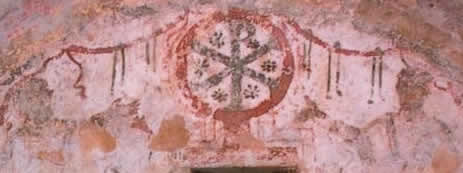ABSTRACTS
Zoltán Frenyó, Saint
Augustine on lying
Is there any case when lying is permitted? Saint Augustine examines the
problem in two works. In his work "On lying" (395) he analyses Gal 2,11,
emphasizes that there was a real disagreement between the apostles Paul and
Peter and asserts that the Holy Bible must not contain any pretending and
lying. We can see the genesis of this work in the course of the
correspondance between Saint Augustine and Saint Jerome who represented a
different opinion concerning this question.
The other work of Saint Augustine is "Against lying" (420) which was born in
the course of the priscillianist debate. In this case he had to answer the
question whether it is allowed or not for a Christian to pretend a different
persuasion as he confesses in a priscillianist community which however
follows just this attitude. Saint Augustine unambigously teaches that lying
as weapon against the priscillianist enemy is to be condemned.
According to Saint Augustine lying is the intention of delusion. Although
there are several kinds of lying, it is never to be justified. As an essence
of Saint Augustine's view we can summarize that 1) lying can never be a
merit, 2) however in many cases we can easily look for a forgiveness for it.
The influence of Saint Augustine is extraordinary in this question. With his
ideas he is one of the main and most consistent representatives of the clear
intentionalist ethics.
Athanáz Orosz:
Il corpo alienato e integrato nel Corpo di Cristo nell’opera di Massimo il
Confessore e dei suoi coetanei
S. Giovanni Climaco parlava spesso del corpo. Le
sue affermazioni relativi a questa “spoglia mortale” sono piuttosto pessimiste.
Possiamo mettere accanto a lui l’opera filosoficamente più fondata del suo
coetaneo, di Massimo il Confessore. Il primo grande trattato filosofico di S.
Massimo fu il famoso commento al discorso telogico 14 di S. Gregorio Nazianzeno,
l’Ambigua 7. In questa opera si vede bene lo sfondo metafisico dell’antropologia
del Confessore. All'opposto di ogni mito platonico dell'unità primitiva degli
spiriti preesistenti e della preesistenza immobile, il teologo bizantino
dimostra che “pure gli esseri intellettuali e razionali sono in movimento”. Il
Confessore intende ogni mutabilità come la conseguenza naturale della creazione
che è l'atto di Dio. Il movimento e la corporeità stessa si effettua in funzione
dell'intenzione divina e ha come fine la stessa intenzione divina. Il fine sarà
il compimento della perfezione idealmente prescritta nel Logos del principio: ma
la sua realizzazione dipende pure dalla volontà libera delle creature. Poi, in
vista dell’unione con Dio, Massimo spiega la situazione paradossale dell’uomo
corporale e passibile. Egli vede l’importanza del “pathos” naturale nella
prospettiva di un’ antropologia cristiana, fondata su una cosmologia bibbica. In
questa prospettiva il male non è altro che la conseguenza di una rivolta: la
mancanza della comunione con Dio. Il peccato scava un abisso immenso tra Dio e
l’uomo alienato.
Nella sua esegesi, il Confessore presenta la situazione di quest’uomo alienato
dal suo Creatore. Nell'Amb. 31, egli propone un esegesi interessante delle tre
parabole di Lc 15: invece di riferirsi all'antropologia protologica, egli
presenta la sua antropologia in base alla dottrina del Vangelo. In questa
prospettiva neotestamentaria, l'uomo si presenta come “animale deviato e anche
ritrovato”, come Figlio perduto e ritornato.
La chiave della soluzione è l’incarnazione del Verbo di Dio che spogliandosi
assumeva la forma dello schiave. In questo modo, egli poteva liberare l’umanità
dalla sua situazione alienata. Attraverso l’ascesi e l’amore disinteressato,
ognuno deve allontanarsi dalla sua forma di vita alienata, nella quale il
peccato l’a trascinato. In questo modo, l'uomo umile può diventare simile al
Verbo umiliatosi volontariamente per la salvezza. Nella visione di un mondo
riconciliato, il Confessore applica l’ideale ottimista della sintesi cosmica al
rapporto corpo-anima ugualmente. Tutto “l'uomo è una Chiesa mistica”, cioè il
santo luogo dove si realizza la suprema unità, la santificazione del mondo
profano, estraneo a Dio. Il suo corpo è la navata di questa Chiesa, “mentre con
il santuario dell'anima conduce a Dio”. In questa prospettiva “Noi siamo corpo
di Cristo e membra per la nostra parte” (1 Cor 12) non perché diveniamo suo
corpo con la privazione dei nostri corpi e neppure perché a sua volta egli passi
in noi secondo la sostanza [...], ma perché a somiglianza della carne del
Signore ci liberiamo dalla corruzione del peccato”.
Eszter Spät, The
Gnostic Interpretation of Adam’s Fall and the mythology of the Kurdish
Yezidis
The Biblical story of Adam’s
Fall and its consequences exerted a great influence of the development
of Christian anthropology. While in Christianity, especially in Western
Christianity based on the thought of Agustine, the negative
interpretation led to a radically negative image of man, among the
Gnostics the tasting the forbidden fruit appears as the allegory of
Gnostic enlightenment, the awakening of the soul. Though the Gnostic
movement did not survive the first centuries of the Christian era, this
revolutionary interpretation of the Fall, along with a number of other
motifs presumably of Gnostic origin, came to be incorporated into the
mythology of the Yezidis, a Kurdish-speaking heterodox religious
minority.



